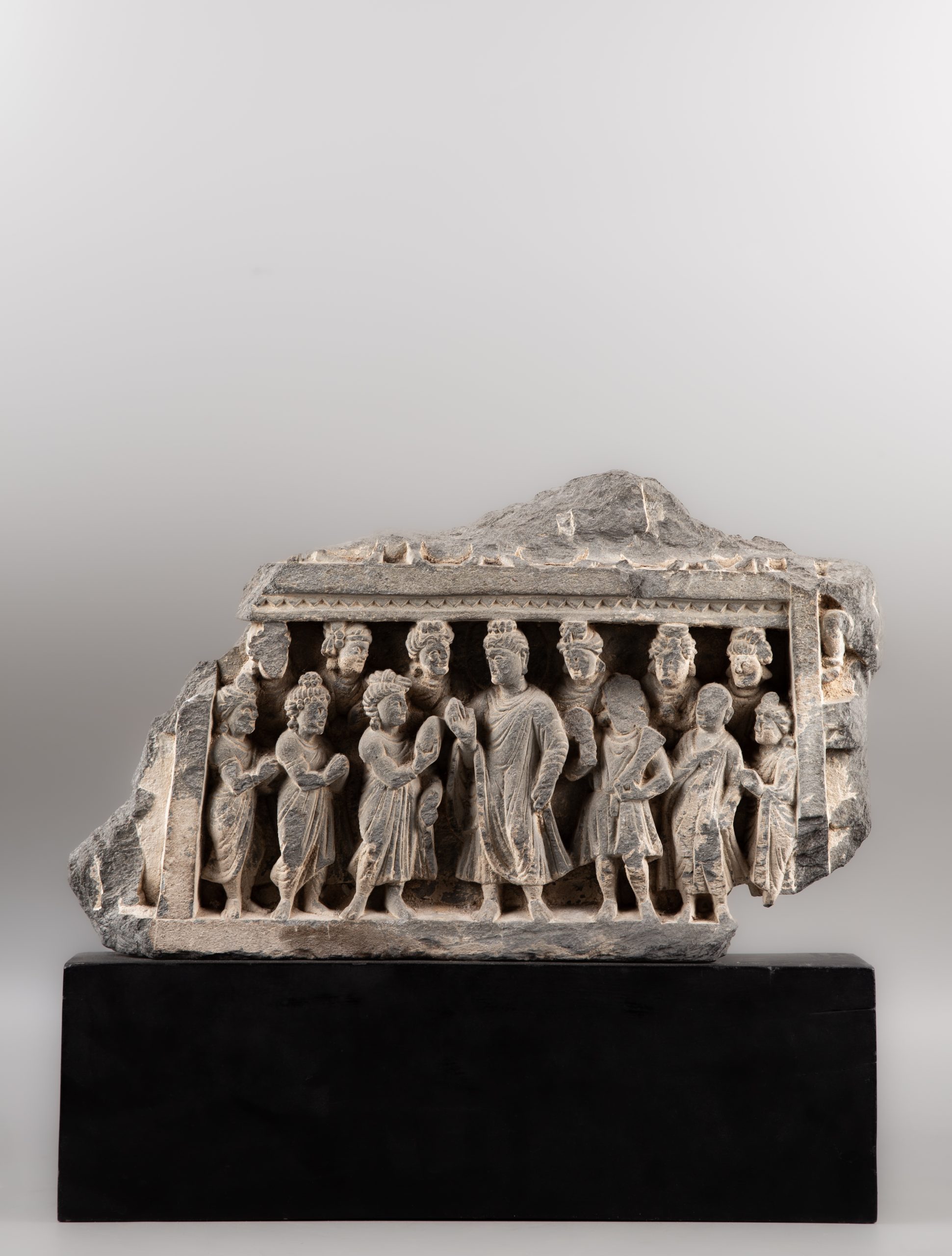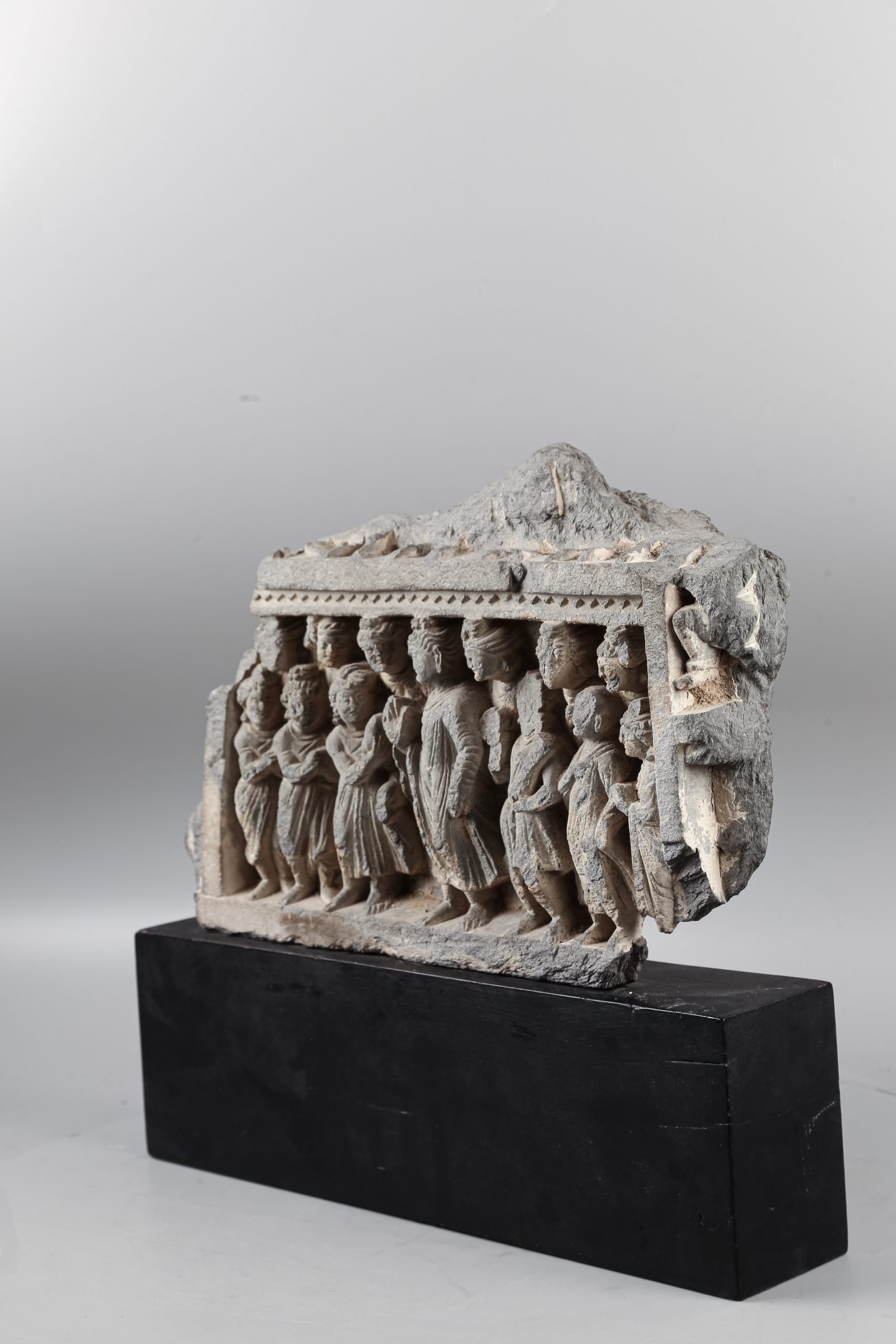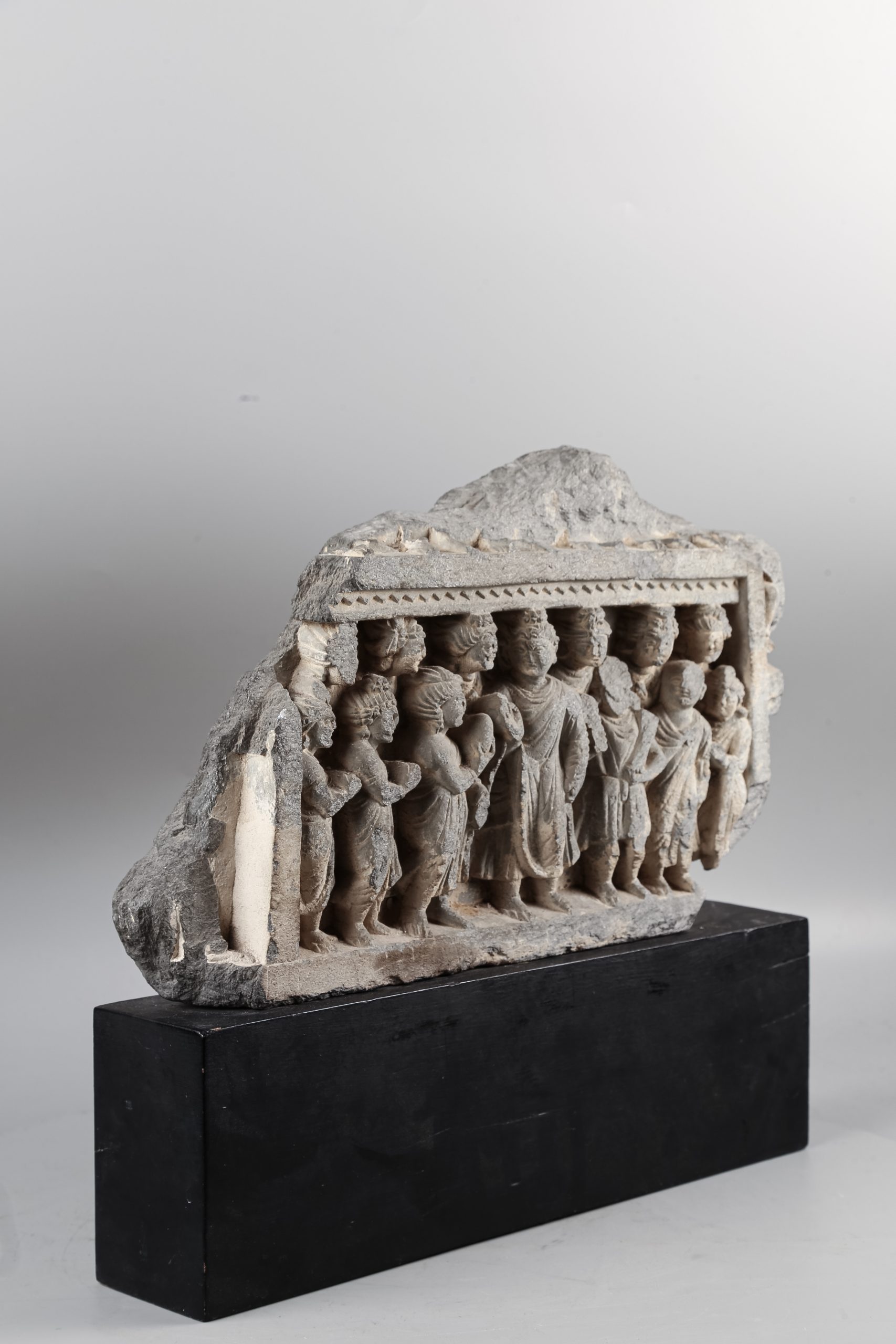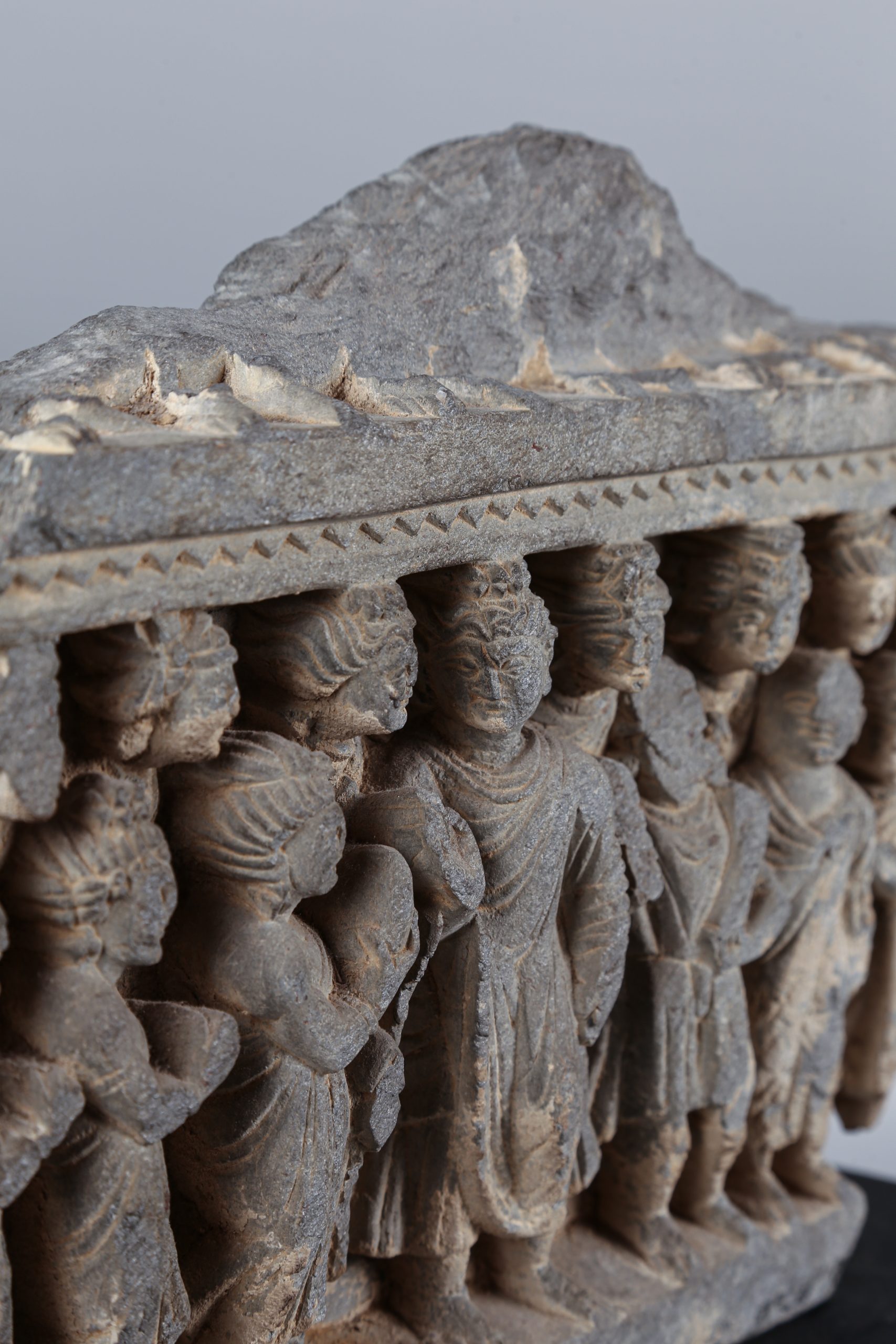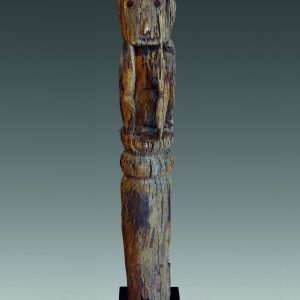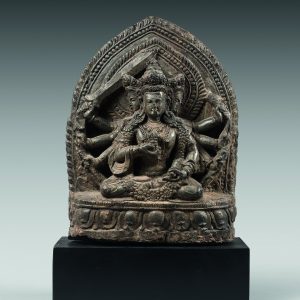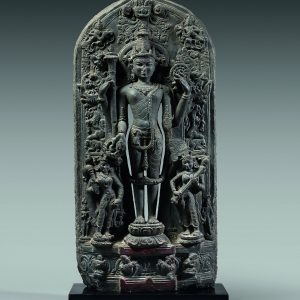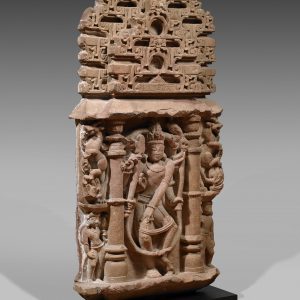Frieze of Buddhist scene
Schist
Ancient region of Gandhara
3rd-5th century
H. 25 cm
Description
Carved in schist, in high relief, this frieze depicts a narrative scene from the life of Buddha. The episode is sculpted in the classical Gandhāra style, taking place in an architectural setting. The Buddha is surrounded by draped bodhisattvas facing him. He is depicted as the central figure, at the heart of the scene, and is noticeably larger in stature.
It was in the Gandhāra that the anthropomorphic iconography of the Buddha gradually took hold, breaking with centuries of aniconic tradition. This change should be seen in the context of the development of Mahāyāna Buddhism, which was attracting a larger number of followers. A syncretic style developed, as seen in the use of pilasters and columns surmounted by Hellenistic-style capitals with acanthus motifs, a device well known to the Greeks for dividing up and punctuating the different moments of a narrative, as is the case here.
In Gandhāra, art is protean and the style resolutely syncretic, at the crossroads of influences: the clothing style of the figures bears witness to Hellenistic and Roman stylistic influences, sometimes draped in wide garments with quilted folds reminiscent of a toga or himation, sometimes with their muscular torsos left exposed and covered in jewels, thus recalling the nomadic ancestry of the Kuṣāṇ tribes (Guishuang, the Yuezhi tribe that gave rise to the term Kuṣāṇ). The elaborate hairstyles and heavy earrings, on the other hand, are typically Indian. This stylistic cosmopolitanism is here a happy characteristic of Gandhāra art; the dual influence of classical Mediterranean and Indian sculpture giving all its charm to this work by endowing it with a strong aesthetic and great historicity.
Provenance : American private collection, since 50’s.

